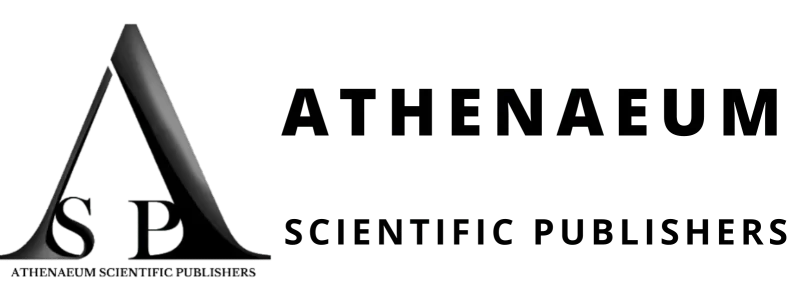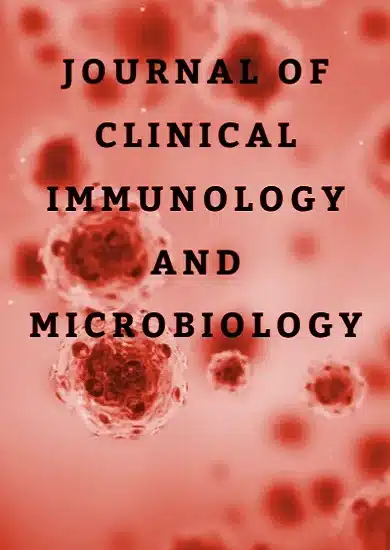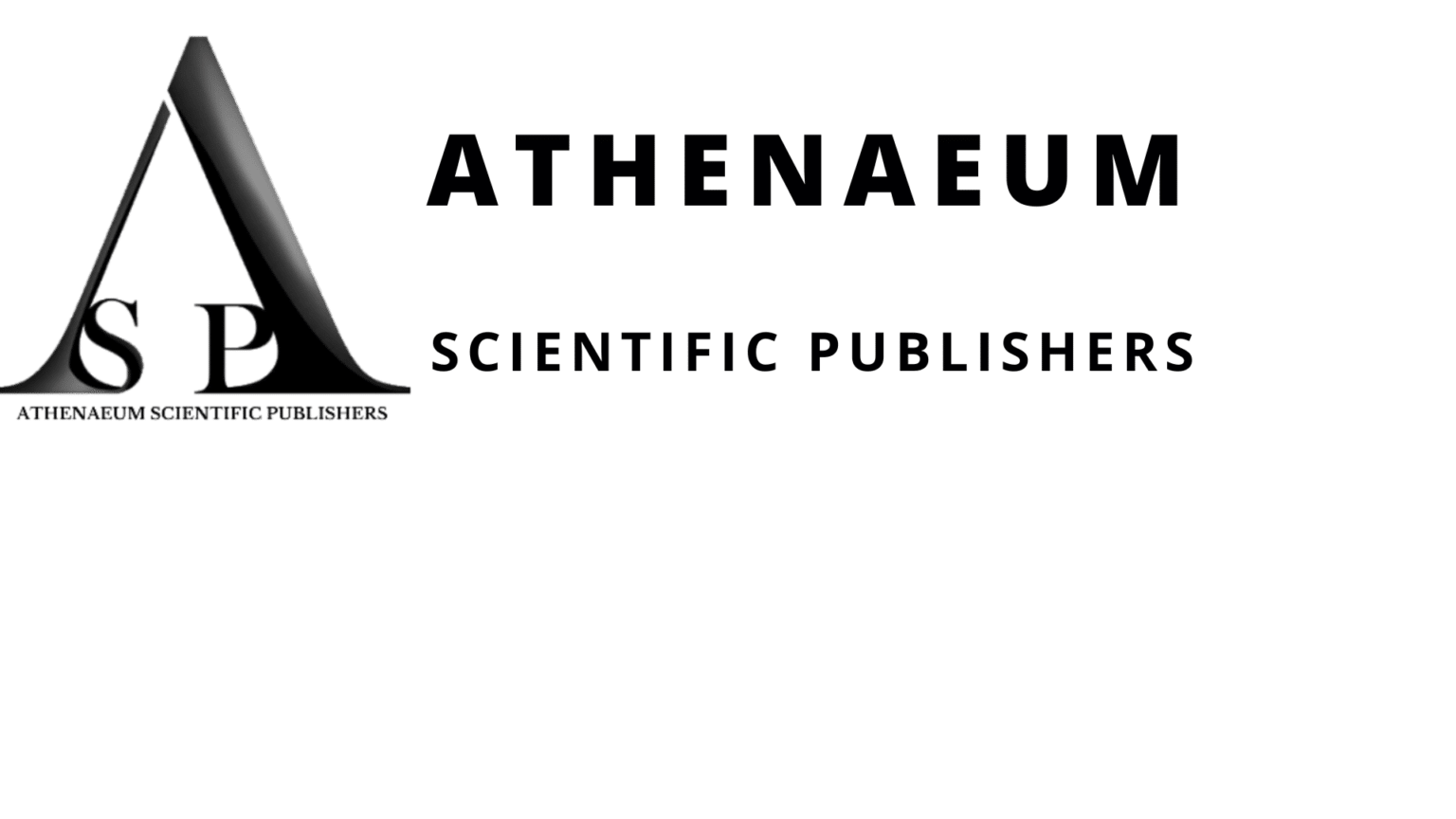Research Article | Vol. 6, Issue 1 | Journal of Clinical Immunology & Microbiology | Open Access |
Applications of Spectrophotometric Methods and SDS-PAGE In Quantification of Total Soluble Proteins in Escherichia coli From Raw Meat, Offals and Rectal Swabs of Cattle in Gwagwalada
Olabode Olatunde Kazeem1, Mailafia Samuel1*, Ameh James Agbo1, Martha Echioda Ogbole1, Monday Onakpa2, Wesley Daniel Nafarnda3
1Faculty of Veterinary Medicine, Department of Veterinary Microbiology, University of Abuja, Nigeria
2Faculty of Veterinary Medicine, Department of Pharmacology and Toxicology, Nigeria
3Faculty of Veterinary Medicine, Department of Public Health and Preventive Medicine, Nigeria
*Correspondence author: Mailafia Samuel, Faculty of Veterinary Medicine, Department of Veterinary Microbiology, University of Abuja, Nigeria; Email: [email protected]
Citation: Kazeem OO, et al. Applications of Spectrophotometric Methods and SDS-PAGE In Quantification of Total Soluble Proteins in Escherichia coli From Raw Meat, Offals and Rectal Swabs of Cattle in Gwagwalada. J Clin Immunol Microbiol. 2025;6(1):1-7.
Copyright© 2025 by Kazeem OO, et al. All rights reserved. This is an open access article distributed under the terms of the Creative Commons Attribution License, which permits unrestricted use, distribution, and reproduction in any medium, provided the original author and source are credited.
| Received 08 April, 2025 | Accepted 23 April, 2025 | Published 29 April, 2025 |
Abstract
The study was carried out to quantify the total soluble protein profile of nine Escherichia coli isolates from raw meat, offals and rectal swab by spectrotrophotmetric method. The results indicated that the virulent strains with highest concentration of protein from rectal swab was 19.19 µg followed by raw meat 15.88 µg while the lowest concentration of proteins from raw meat was 8.35 µg, lowest for offals was 10.55 µg and the lowest for rectal swab was 12.95 µg. this was followed by the electropherogram of the nine E. coli strains by Sodium Dodecyl Sulfate Polyacrylamide Gel Electrophoresis (SDS-PAGE). E. coli isolates from raw meat, offals and rectal swab when compared with the marker, were similar in their molecular weights. The obtained results displayed bands that are both faint and dense, appearing at different approximate molecular weights of 17 KDa, 34 KDa, 43 KDa, and 55 KDa. The results of our protein profiles showed a clear indication of the genetic relatedness between diver’s members of the Escherichia strains. It is an indication of their close genetic relatedness within the members of the Enterobacteriaceae species. E. coli organisms are therefore regarded as heterogenous groups of bacteria of pathogenic significance which are responsible for virulence and pathopgenicity. This information is novel as it could be used as a standard for further classification and understanding the diversity of the members of the genus Escherichia. Further studies including the analysis of the virulent genes cloning and expression of genes of interest is necessary to identify new strains of Escherichia coli.
Keywords: Escherichia Coli; SDS-PAGE; Protein; Raw Meat; Offals; Rectal Swab and KDa
Introduction
E. coli are microbial pathogens that inhabit the Gastro Intestinal Tract (GIT) of both healthy animals and man [1]. E. coli in the genus Escherichia is a member of the family Enterobacteriaceae are facultative anaerobes, rod-shaped bacteria and has been identified as indicator species of fecal and enteric pathogen [2]. E. coli strains are not-pathogenic, some are known to cause significant human gastrointestinal disorders such as HC and HUS Shiga toxins (stx 1 and stx 2) Henterohaemolysin (lyA) and intimin (eaeA) are virulence factors that play a key role in the development of the disorders [3].
During various phases of growth, bacteria produce Membrane Vesicles (MVs) that contain much of the biological content derived from their parent bacterial cells, such as phospholipids, Lipopolysaccharides (LPS), proteins, enzymes, toxins, DNA and RNA [4].
Molecular techniques are major tools for the characterization of bacteria from food and other biological substances. Sodium Dodecyl Sulfate-Polyacrylamide Gel Electrophoresis (SDS-PAGE), DNA Amplification Finger Printing (DAF) and Restriction Fragment Length Polymorphism (RFLP) are the molecular techniques used for the characterization of bacterial macromolecules and are of significant importance [5]. SDS-PAGE is an important molecular technique used for the identification to species level of whole cell proteins and it has the advantage of being fairly simple and rapid to perform [6]. But for the identification, this technique requires much data to cover all known target species [7]. The whole cell protein profiles of E. coli can be easily studied on SDS-PAGE and therefore, this present study was conducted to meet the main objectives to characterize the bacterial proteins of E. coli, by using SDS-PAGE and to study whole cell microorganism.
Utilizing biochemically protocols, the organism isolated from different animal species has been found to have slight variations which are not consistent [8]. Genetic relatedness have been noticed by different [9,10]. Different researchers have made attempts to establish the protein profiles of isolates from different animals species with the aim of elucidating the diversities of the isolates by the use of Polyacryamide Gel Electrophoresis (PAGE) and Sodium Dodecyle Sulfate Polyacrylamide Gel Electrophoresis (SDS-PAGE) [11-13]. The aim of this study is to apply spectrophotometric method and SDS-PAGE in the quantification of total soluble proteins of Escherichia coli isolates from raw meat, offals and rectal swabs from cattle in Gwagwalada. This will provide an understanding of these diversities and will assist in the classification and the phylogenetic relatedness of existing and newer species of E. coli.
Materials and Methods
Sources of Isolates
All the Nine isolates used in this study were confirmed biochemically using conventional assays involving; selective plating, preliminary identification and complete biochemical characterization. Using Brain Heart Infusion (BHI) broth, a few biochemically characterized isolates were grown overnight and then transferred in the broth medium in distinct test tubes labeled with labels to the Mary Hallaway Teaching Laboratory, Department of Biochemistry, ABU Zaria.
Protein Analysis of E. coli Species
Bradfords method was used to quantify the total protein in E. coli species (Bradford, 1976). The isolates were grown in Brain Heart Infusion (BHI) broth at 37◦C for a full 24-hour period. After this incubation, 1 ml of the broth was put into Eppendoff tubes and centrifuged for 10 minutes at 4◦C at 5,000 rpm using a Harous labofuge. After that, 80 µl of lyses buffer was added to each test tube containing the supernatant, and the mixture was allowed to incubate for 30 minutes at room temperature. The spectrophometer readings of the two duplicates were averaged at 595 nm.
Nine strains of Staphylococcus were sourced from stored isolates from the laboratory of veterinary microbiology, Faculty of Veterinary Medicine University of Abuja.
Determination of total soluble protein concentration was carried out using the burette method as described by Lu and Fu [14]. The isolates were grown overnight in Brain Heart Infusion (BHI) broth. After incubation at 37◦C for24hrs, it was labofuged (Jenway R640, UV/vis, USA). Aliquots (0.5 ml) of residues were dispensed in 10 ml capacity pyrex test tubes (BDH laboratories) and 0.2 ml of Burette reagent was added to it. The mixture was agitated by shaking to apparent homogeneity and incubated at 27◦C for 30 minutes. Thereafter, it was calibrated and the absorbence was measured at 570 nm using a spectrophotometer (Jenway R640, UV/Vis, USA).
A blank was set in parallel and was prepared by adding 0.5 ml of distilled water and 2.0 ml of Burette reagents, without the experimental samples and was incubated at room temperature for 30 minutes under the same conditions described earlier. The blank was used to adjust (zero) the spectrophotometer before reading were taken. A control tube was prepared by adding 0.5 ml of BHI (without organism) to 2.0 ml of Burette reagents and the absorbence reading taken at 570 nm. The difference in absorbence readings of broth culture without organism was taken from the difference of absorbence readings of broth culture with organisms. The readings of protein values (mg/ml) were estimated using a standardized curve earlier plotted from the known concentration and absorbance of a standard protein Bovine Serum Albumin (BSA). A chart was deduced from the values of protein concentration of the E. coli species.
Gel Electrophoresis
Sodium Dodecyle Polyacrylamide Gel Electrophoresis (SDS-PAGE) of E. coli proteins. This was carried out using the method of Leamli (1970) and presented below
a. Sample preparation
Separate test tubes were used to prepare the samples. A loading buffer containing 50 µl of glycerol, 2.0 ml of 10% SDS, 0.25 mg of bromophenol blue, 2.5 ml of stacking gel buffer, and 0.25 ml of mercaptoethanol was added, and the mixture was incubated at 900C for two minutes. The buffer was found to contain E. coli.
b. Preparation of Running Gel (12%) and Stacking Gel (4%)
A mixture of 3.3 ml distilled water 4.0 ml 30% acrylamide mixture, 2.5 ml separating gel buffer pH 8.9, 0.1 ml 10% SDS, 0.1 ml 10% Ammonium Persulphate (APS) and 0.01 ml TEMED was made and poured into assembled gel plates, leaving sufficient space at the top for the stacking gel. 0.1% SDS was gently overlayed on the gel mix after polymerization, the overlay was removed and the surface of the separating gel was rinsed with water to remove any unpolymerized acrylamide.
The stacking gel was prepared by mixing the following; 1.4 ml distilled water, 0.33 ml 30% acrylamide mixture, 0.25 ml stacking gel buffer pH 6.9, 0.02 ml 10% Ammonium Persulfate (APS) and 0.005 ml TEMED. This was used to fill the remaining space on the running gel and the comb inserted immediately.
c. Electrophoresis Run
The comb was removed and the wells were rinsed to remove any remaining unpolymerized acrylamide after the stacking had finished polymerizing.
Once the running buffer (glycerin/Tris buffer) was added to the buffer tank and 40 microliters of the prepared sample and marker protein were loaded into separate wells, the apparatus was coupled and connected to the power pack (a.d.c. supply).
The procedure was stopped when the dye marker band was about 3 mm from the end or the gels. The gels were removed and immersed in 12% Trichloroacetic Acid (TCA) for 30 minutes in order to fix the protein. They were then put in the Coomasie brilliant blue solution. After 12 hours, the gels were stained in a 50:40:10 mixture of acetic acid, methanol, and water. The protein bands were visible after the distaining rounds. The electrophoresis was done several times to ensure consistency in the protein patterns.
d. Molecular Weight Determination
Using Wiester and Campbell’s (1972) formula, this was completed as instructed. The gels were measured for the following: distance traveled by dye marker, distance traveled by protein bands, gel length before staining, and gel length after staining (s). The following equation was used to calculate the relative mobilities:
Mobility = Distance moved by band x gel length before staining
Distance moved by dye marker x gel length after destaining
Since mobility a 1/ mol wt
Plot of log mol. Weights of marker against mobility was constructed and the molecular weight of the partially purified E. coli protein was extrapolated from the standard curve.
Results
Table 1 contained the various E. coli species isolated from raw meat, offals and rectal swab of cattle that were subjected to protein analysis the mean value of protein concentration per gram of cells was determined for the nine (9) isolates of E. coli species. Using spectrophotometric analysis (Bradford method) with slope y=0099x (Fig. 1) the chart in fig. 2 was extrapolated and it showed the total amount of protein and the output of protein expression of E. coli species involved in pathogenicity.
The results of the chart (Fig. 2) shows extracted and quantified protein concentration of 19.19 µg from E. coli organisms from raw meat followed by 15.88 µg from raw meat and the lowest protein concentration was 8.35 µg for E. coli organisms from raw meat.
The results of E. coli protein profile were analyzed by Sodium Dodecyle Sulfate Polyacrylamie Gel Electrophoresis (SDS-PAGE).
Fig. 1 shows the electropherogram of the 3 protein fragments each from raw meat, offals and rectal swab proteomic residues digested with lysis buffer and subjected to electropherogram using polyacrylamide gel. All the nine isolates containing the lysis buffer were loaded as follows: M, E1, E2, E3, E4, E5, E6, E7, E8 and E9 and each was designated as A, B, C, D, E, F, G, H, I and J respectively. Isolates E1-E3 were from raw meat, E4-E6 were from offals while E7-E9 were from rectal swab of cattle. The E. coli isolates from raw meat, offals and rectal swab from cattle containing the lysis buffer were loaded thus: Marker/ladda (Ladda) M in lane 1, E. coli with lysis buffer (E1) in lane 2, E. coli with lysis buffer (E2) in lane 3, E. coli with lysis buffer (E3) in lane 4, E. coli with lysis buffer (E4) in lane 5, E. coli with lysis buffer (E5) in lane 6, E. coli with lysis buffer (E6) in lane 7, E. coli with lysis buffer (E7) in lane 8, E. coli with lysis buffer (E8) in lane 9, E. coli with lysis buffer (E9) in lane 10.
The electropheromic bands of the lysis buffer proteins were estimated for its molecular weight and labeled A for 170 KDa, B for 130 KDa, C for 95KDa, D for 55KDa, E for 43 KDa, F for 34 KDa, G for 20 KDa, H for 17KDa and I for 10 KDa. There are 5 prominent bands at approximate molecular weight of 17 KDa, 34 KDa and 43 KDa and can be visualized using the ultraviolet transilluminator. From E. coli isolates H, F and D on Lanes respectively. Approximately faint bands were found in E. coli isolates in lane 2, 4, 5, 7, 8 and 9 at bands of molecular weight 34 KDa, 43 KDa and 55 KDa. All the isolates had a band at 17 KDa. Isolates 3, 4, 5, 7, and 10 shwed bands at 43 KDa whle isolate 10 showed bands at 55 KDa.
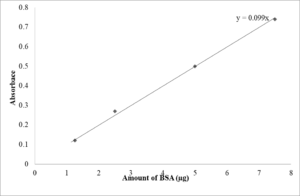
Figure 1: Standard curve of the Bradford assay.
S/N | Sample | Organism | Source | Absorbance | Amount of protein (µg) |
1 | E1 | E. coli | Raw meat | 0.832 | 8.3534137 |
2 | E2 | E. coli | Raw meat | 1.582 | 15.883534 |
3 | E3 | E. coli | Raw meat | 1.348 | 13.534137 |
4 | E4 | E. coli | Offals | 0.926 | 9.2971888 |
5 | E5 | E. coli | Offals | 1.051 | 10.552209 |
6 | E6 | E. coli | Offals | 1.272 | 12.771084 |
7 | E7 | E. coli | Rectal swab | 1.535 | 15.411647 |
8 | E8 | E. coli | Rectal swab | 1.29 | 12.951807 |
9 | E9 | E. coli | Rectal swab | 1.912 | 19.196787 |
Table 1: Spetrophotometric analysis of E. coli isolates from Raw meat, offals and Rectal Swab of Cattle.
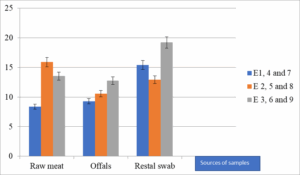
Figure 2: Histophotogramic display of the absorbance of E. coli from different sources.
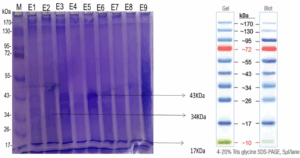
Figure 3: Dissipation of the electropherogram of the nine species of members of the genus E. coli. Key: E= E. coli, M= protein Standard/ladda.
Discussions
Spectrophotometric studies displayed proteins ranging from 17 µg -43 µg with a slope of y = 0.099x (Fig. 1). The chart in Fig. 2 was extrapolated and it showed the total amount of proteins and the output of protein expression of the E. coli species involved in pathogenicity. The highest amount of protein was observed in rectal swab while the lowest was in raw meat. Moreso, the quantity of protein is a reflection of synthesis of the proteins and this proteins are expressed by the DNA which could entail that there may be mutation leading to renewed synthesis of new proteins to cope with the adverse effects of the environment. It could be deduced that the highest protein concentration comes from E. coli organisms from roasted suya and roasted fish. This maybe an indication for a particular cross contamination of suya and fish products in areas covered by this study [15]. Moreso, high quantity of protein concentration may be a reflection of pathological lesions or expression by the DNA of E. coli organisms which could entail that there may be mutation leading to renewed synthesis of new proteins to cope with the adverse effects of the environment. the lower concentration of E. coli organisms in roasted chickens may reflect hygienic conditions in which the chicken were prepared or roasted [15,16]. Appropriate measures needs to be put in place to destroy this organisms and control their spread to safeguard human health.
The protein bands were observed in all the nine isolates with differences in the bands from one isolates to the other. Our studies revealed that dense prominent bands which were found at approximately molecular weight 17 KDa, 34 KDa and 43 KDa. The analysis of the electrophoretic patterns of the lysis protein isolates of E. coli as identified in this study have proved to be very informative and useful in analyzing the protein profile of E. coli species [17]. Our results show dense prominent bands ranging from approximately molecular weight of 17 KDa, 34 KDa and 43 KDa respectively. This is clear indication of the genetic relatedness of the members of the genus Escherichia. It has been well known that protein expression is a function of the DNA which may be genetically directed via the patterns that has been expressed in our findings. More so, protein pattern by SDS-PAGE in our research tends to express the identity and diversity of E. coli phenotype as well as its relatedness with member of the Enterobacteriaceae group.
The differences observed in the banding patterns as dissipated in our results shows that the organism with same pattern could be grouped as same strain and those with different banding pattern could be placed as separate strain [18]. The faintness or heaviness of the bands could be due to genes exhibited at the time of microbial harvest or low quantity of the proteins used or site specific hybrids encountered during protein extraction [19]. The total number of bands generated are displayed in Fig. 1 it shows a lot of complexities and further confirms the differences or diversities existing in these organisms. This could be used as a standard for the further classification of the microorganism in chicken, those ascensions with the same bands maybe grouped as separate strain. Hirayama and Nakao confirmed the protein profile of E. coli which could be a possible as indicated with the results of our study [20-22].
Conclusion
In conclusion, successful approach for the whole crude protein profile analysis of nine E. coli isolates has been attempted through spectrophometric methods and SDS-PAGE and our findings shows close association of the electrophoretic binding patterns of different strains of E. coli. The close similarity within the banding pattern could indicate their close relations to other members of Enterobacteriaceae and their relatedness/diversities between the different strains and serotypes of E. coli. We recommend further molecular work on using cloning and expression of E. coli genes of interest.
Conflict of Interest
The authors have declared no conflict of interest.
Acknowledgement
This research work is sponsored by the University of Abuja Tertiary Education Trust (TET) Fund research grants funded by the Federal government of Nigeria. We also appreciate the laboratory assistance of Professor O.O Balogun of the department of Biochemistry, ABU Zaria, and all laboratory technicians of the Mary Hallaway Teaching Laboratory, Ahmadu Bello University, Zaria for the technical support and advice. In addition, we appreciate the cooperation of each member of this research team for the cooperation and togetherness during this research.
References
- Puvača N, de Llanos Frutos R. Antimicrobial resistance in Escherichia coli strains isolated from humans and pet animals. Antibiotics. 2021;10(1):69.
- Kaur H. Identification and characterization of antimicrobial resistance in indicatorbacteria ( coli and Enterococcus spp.) from surface waters of Wyoming. University of Wyoming; 2021.
- EFSA Biohaz Panel, Koutsoumanis K, Allende A, Alvarez‐Ordóñez A, Bover‐Cid S, Chemaly M, et al. Pathogenicity assessment of Shiga toxin‐producing Escherichia coli (STEC) and the public health risk posed by contamination of food with STEC. EFSA J. 2020;18(1):e05967.
- Zhao Y, Li X, Zhang W, Yu L, Wang Y, Deng Z, et al. Trends in the biological functions and medical applications of extracellular vesicles and analogues. Acta Pharmaceutica Sinica B. 2021;11(8):2114-35.
- Durrani R, Abubakar M, Arshed MJ, Saleha S, Ullah I, Ali Q. Biological characterization and protein profiles of two model bacteria by SDS-PAGE and FT-IR. ARPN Journal of Agricultural and Biological Science. 2008;3(5&6).
- Bhatt M, Rai V, Kumar A, Kiran, Yadav AK, Rajak KK, Gupta V, Chander V, Avasthe RK. SDS-PAGE and Western blotting: Basic principles and protocol. Protocols for the Diagnosis of Pig Viral Diseases. 2022;313-28.
- Leisner JJ, Millan JC, Huss HH, Larsen LM. Production of histamine and tyramine by lactic acid bacteria isolated from vacuum‐packed sugar‐salted fish. Journal of Applied Bacteriology. 1994;76(5):417-23.
- Ge B, Domesle KJ, Gaines SA, Lam C, Bodeis Jones SM, Yang Q, Ayers SL, et al. Prevalence and antimicrobial susceptibility of indicator organisms Escherichia coli and Enterococcus spp. isolated from US animal food, 2005–2011. Microorganisms. 2020;8(7):1048.
- Denamur E, Clermont O, Bonacorsi S, Gordon D. The population genetics of pathogenic Escherichia coli. Nature Reviews Microbiology. 2021;19(1):37-54.
- Aworh MK, Kwaga JK, Hendriksen RS, Okolocha EC, Thakur S. Genetic relatedness of multidrug resistant Escherichia coli isolated from humans, chickens and poultry environments. Antimicrobial Resistance & Infection Control. 2021;10:1-3.
- Okoko T. Studies on the structure, lipid modification and interactions of the virulence-associated proteins of Rhodococcus equi. University of Northumbria at Newcastle (United Kingdom); 2014.
- Procópio-Azevedo AC, de Abreu Almeida M, Almeida-Paes R, Zancopé-Oliveira RM, Gutierrez-Galhardo MC, de Macedo PM, et al. The state of the art in transcriptomics and proteomics of clinically relevant sporothrix species. Journal of Fungi. 2023;9(8):790.
- Mahdavi Poor B, Rashedi J, Asgharzadeh V, Mirmazhary A, Gheitarani N. Proteases of acanthamoeba. Parasitology Research. 2024;123(1):19.
- Lu Y, Fu TJ. Performance of commercial colorimetric assays for quantitation of total soluble protein in thermally treated milk samples. Food Analytical Methods. 2020;13:1337-45.
- Mousa MM, Zayed AF, Hussein EK. quality assessment of fresh and chilled broiler chicken carcasses retailed in Alexandria province. Alexandria J Veterinary Sciences. 2021;69(2).
- Erbi D, Somda NS, Doutoum AA, Ali HM, Cissé H, Hien YE, Tidjani A, Savadogo A. Microbiological quality and antimicrobial resistance of Salmonella spp. and Escherichia coli isolated from grilled meat. Int J Biological and Chemical Sciences. 2022;16(6):2881-91.
- Ranjbar M, Nedaeinia R, Goli M, Shahi S. Evaluation of the thermal processes on changing the phenotypic characteristics of Escherichia coli strains from ice cream compared to non-pasteurized milk. Fermentation. 2022;8(12):730.
- Miserez A, Yu J, Mohammadi P. Protein-based biological materials: Molecular design and artificial production. Chemical Reviews. 2023;123(5):2049-111.
- Athukorala A, Helbig KJ, McSharry BP, Forwood JK, Sarker S. An optimised protocol for the expression and purification of adenovirus core protein VII. Journal of Virological Methods. 2024;326:114907.
- ANI OI, Ohaa OD, UKPAI CA. Modification and installation of water hydrant system in ogbete main market for effective fire combating operation. IJO-Int J Mechanical and Civil Engineering. 2024;7(02):1-19.
- Bradford MM. A rapid and sensitive method for the quantitation of microgram quantities of protein utilizing the principle of protein-dye binding. Analytical Biochemistry. 1976;72(1-2):248-54.
- Laemmli UK. Letter to the scientist. Nature. 1970;227:680-5.
Author Info
Olabode Olatunde Kazeem1, Mailafia Samuel1*, Ameh James Agbo1, Martha Echioda Ogbole1, Monday Onakpa2, Wesley Daniel Nafarnda3
1Faculty of Veterinary Medicine, Department of Veterinary Microbiology, University of Abuja, Nigeria
2Faculty of Veterinary Medicine, Department of Pharmacology and Toxicology, Nigeria
3Faculty of Veterinary Medicine, Department of Public Health and Preventive Medicine, Nigeria
*Correspondence author: Mailafia Samuel, Faculty of Veterinary Medicine, Department of Veterinary Microbiology, University of Abuja, Nigeria; Email: [email protected]
Copyright
Olabode Olatunde Kazeem1, Mailafia Samuel1*, Ameh James Agbo1, Martha Echioda Ogbole1, Monday Onakpa2, Wesley Daniel Nafarnda3
1Faculty of Veterinary Medicine, Department of Veterinary Microbiology, University of Abuja, Nigeria
2Faculty of Veterinary Medicine, Department of Pharmacology and Toxicology, Nigeria
3Faculty of Veterinary Medicine, Department of Public Health and Preventive Medicine, Nigeria
*Correspondence author: Mailafia Samuel, Faculty of Veterinary Medicine, Department of Veterinary Microbiology, University of Abuja, Nigeria; Email: [email protected]
Copyright© 2025 by Kazeem OO, et al. All rights reserved. This is an open access article distributed under the terms of the Creative Commons Attribution License, which permits unrestricted use, distribution, and reproduction in any medium, provided the original author and source are credited.
Citation
Citation: Kazeem OO, et al. Applications of Spectrophotometric Methods and SDS-PAGE In Quantification of Total Soluble Proteins in Escherichia coli From Raw Meat, Offals and Rectal Swabs of Cattle in Gwagwalada. J Clin Immunol Microbiol. 2025;6(1):1-7.
